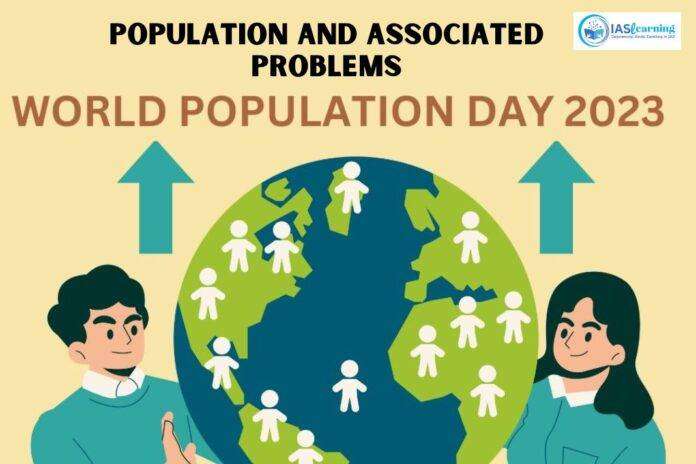Introduction to Population and Associated Issues
The world population reached one billion in 1804, and it took 126 years to add the second billion in 1930. The third billion was added in just 29 years in 1959, indicating an accelerating trend.
The subsequent billion milestones saw a decrease in the time required. The fourth billion was reached in 1974 (15 years), and the fifth billion in 1987 (13 years).
The world population hit 7 billion in 2011, and as per the World Population Prospects report, it is estimated to reach 8 billion in 2022. This continued growth has raised concerns about its impact on resources and the environment.
In India, population size and growth are of particular importance. As of the latest data, India is the second most populated country in the world, with over 1.4 billion people, constituting around 7% of the global population.
According to the United Nations’ 2022 World Population Prospects report, India is projected to surpass China as the world’s most populous nation by 2023, and it could reach 1.5 billion people by 2030.
The rapid population growth in India and other countries presents both opportunities and challenges. While a growing population can contribute to economic development and innovation, it also strains resources, infrastructure, and the environment. To address the associated issues, many governments, including India, implement family planning programs and policies to manage population growth and promote sustainable development. Balancing population growth with environmental sustainability and equitable resource distribution remains a complex global issue.
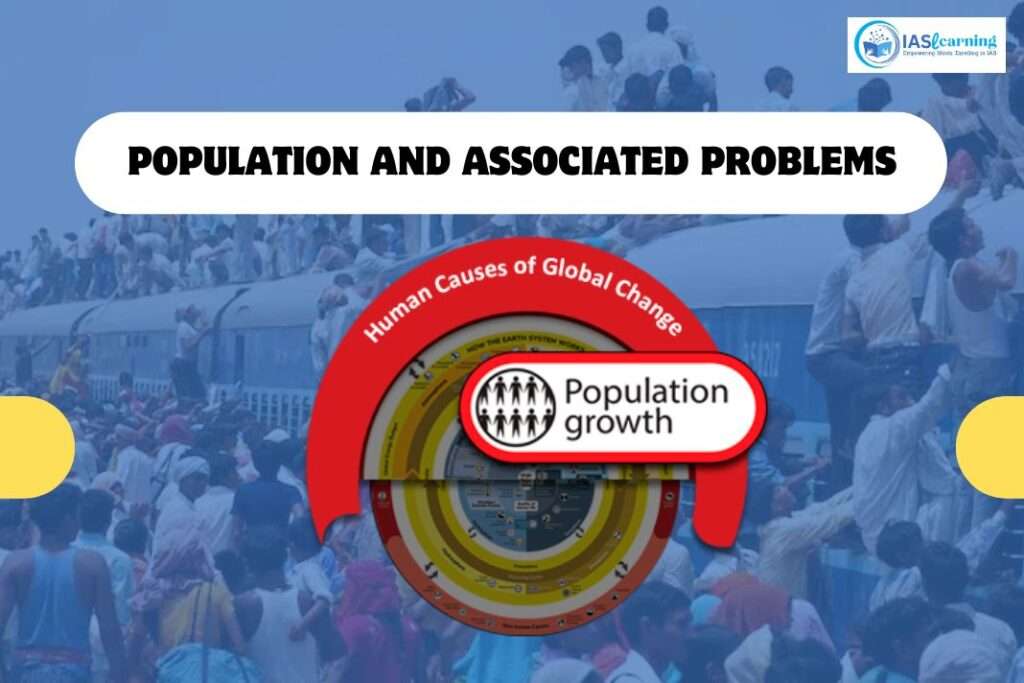
The UN World Population Prospects Report for 2022 contains several significant findings related to India’s population and demographic changes.
- Declining Growth Rate: India’s population growth rate has significantly decreased over the years. In 1972, it was as high as 2.3%, but it has since declined to less than 1%. This reduction in the growth rate indicates a slowing pace of population increase.
- Reduction in Fertility Rates: The average number of children an Indian woman has in her lifetime has seen a substantial decline. It has dropped from around 5.4 children to under 2.1 children, reflecting a shift towards smaller family sizes.
- Replacement Fertility Rate Achieved: The Replacement Fertility Rate is the level at which a population can precisely replace itself from one generation to the next. India has reached this point, which means that the country’s fertility rates are now at a level that sustains the population without significant growth.
- Impact of Improved Healthcare: The decrease in fertility rates and overall population growth can be attributed, in part, to improved access to healthcare and medical advancements. Better healthcare services have led to lower mortality rates and improved child survival, reducing the need for larger families.
- Changing Age Demographics: The population structure of India is undergoing significant changes. The proportion of the population in the age groups 0-14 years, 15-24 years, and 65 years and above is expected to change. The youth population (15-24 years) is increasing, while the child population (0-14 years) and the elderly population (65+) are decreasing.
- Higher Life Expectancy: The population growth in India has been driven, in part, by a decline in early mortality for successive generations. This increase in life expectancy at birth has led to a larger proportion of the population living into their adult and elderly years.
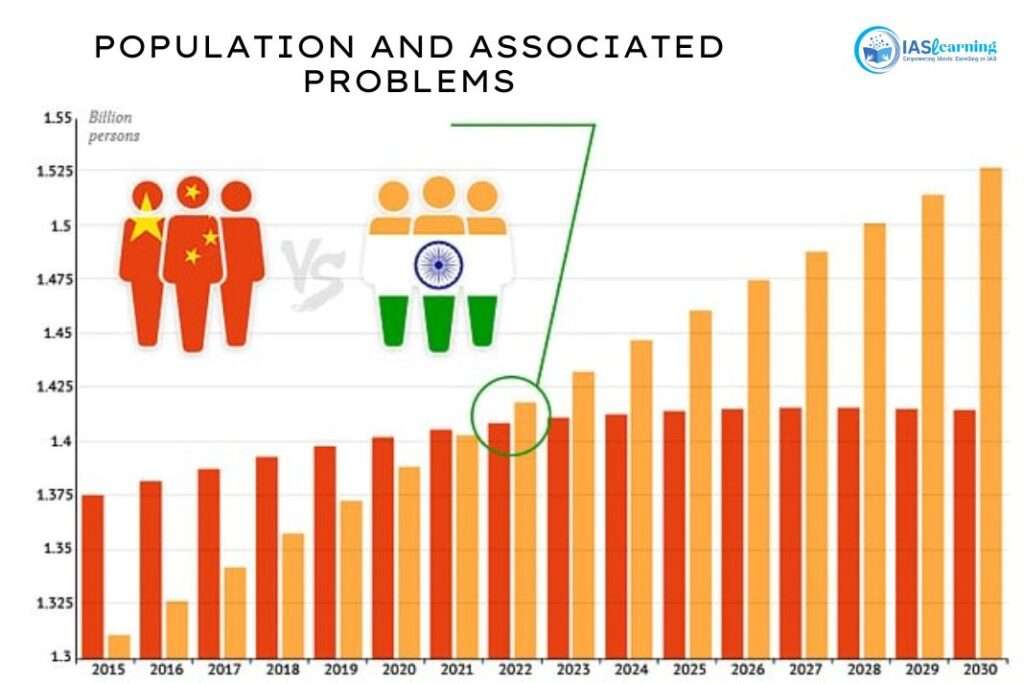
A growing population can bring about several opportunities for a country
- Demographic Dividend and Economic Growth:
- A growing working-age population can lead to the demographic dividend, a period of time when there is a higher ratio of working-age individuals to dependents (children and the elderly). This demographic shift can result in increased per-capita economic growth, as more people are available to participate in the labor force, drive productivity, and contribute to economic development.
- Shift to Consumption-Driven Economy:
- A larger population, particularly with an expanding middle class, can drive the development of a consumption-driven economy. This shift reduces dependence on exports for economic sustainability. As seen in the case of India, such economies are often more resilient in the face of global economic shocks, as they have a strong domestic consumer base.
- Attracting Foreign Investment:
- A large and growing domestic market is attractive to international investors. This can lead to increased foreign direct investment (FDI) in the country, fostering economic growth and technological advancements.
- Opportunities for Immigration and Remittances:
- A growing population provides opportunities for emigration and labor migration. This can result in the creation of more foreign exchange reserves, as remittances sent by emigrants to their home country contribute to foreign currency inflow. Additionally, a diaspora community abroad can strengthen a country’s soft power and influence internationally.
- For example, the Indian Diaspora in the United States sends significant remittances to their families in India, which not only supports the well-being of their families but also contributes to India’s foreign exchange reserves.
Overpopulation can indeed give rise to a range of complex and interconnected issues that impact politics, society, and the economy. Some key issues related to overpopulation include:
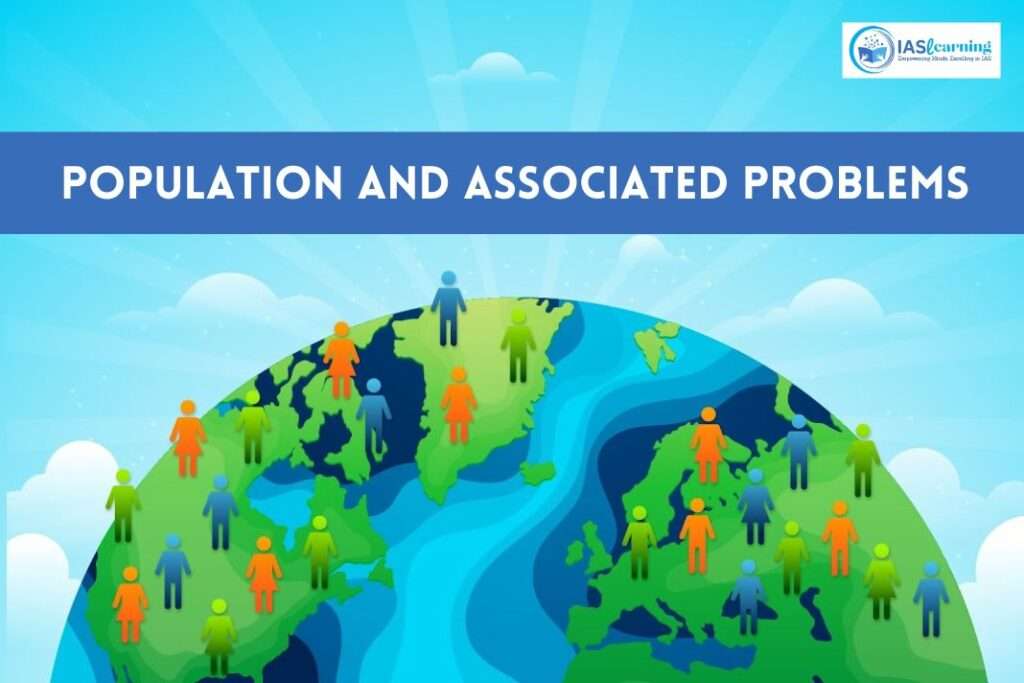
- Unequal Resource Distribution:
- An overpopulated region can strain its available resources, leading to unequal distribution and scarcity of essential resources such as food, water, and energy. This can result in disparities in access to these resources, leading to social and economic inequality.
- Subpar Living Conditions:
- Overpopulation often leads to overcrowding, inadequate housing, and poor living conditions. Insufficient access to sanitation and healthcare facilities can negatively affect the well-being of the population.
- Strained Healthcare System:
- A rapidly growing population can strain the healthcare system, making it challenging to provide adequate healthcare services to all. This can result in inadequate medical care, limited access to essential treatments, and an increased risk of disease outbreaks.
- Infrastructure Challenges:
- Overpopulation can overwhelm infrastructure, including transportation networks, utilities, and public services. Inadequate infrastructure can lead to traffic congestion, insufficient public services, and delays in economic development.
- Ineffective Social Welfare Programs:
- With a rapidly increasing population, social welfare programs may struggle to meet the needs of the most vulnerable members of society, such as the elderly, children, and the economically disadvantaged. This can result in social inequities and hardship for marginalized populations.
- Environmental Degradation:
- Overpopulation contributes to increased environmental stress, including deforestation, pollution, and habitat destruction. This can have negative consequences for biodiversity and long-term sustainability.
- Political and Governance Challenges:
- Overpopulation can strain political and governance systems, making it difficult to implement effective policies and regulations. It may lead to political instability and challenges in managing a growing population’s diverse needs and interests.
Overpopulation can have a significant impact on various social and economic aspects in a country like India. Here are some of the key social and economic consequences of overpopulation:
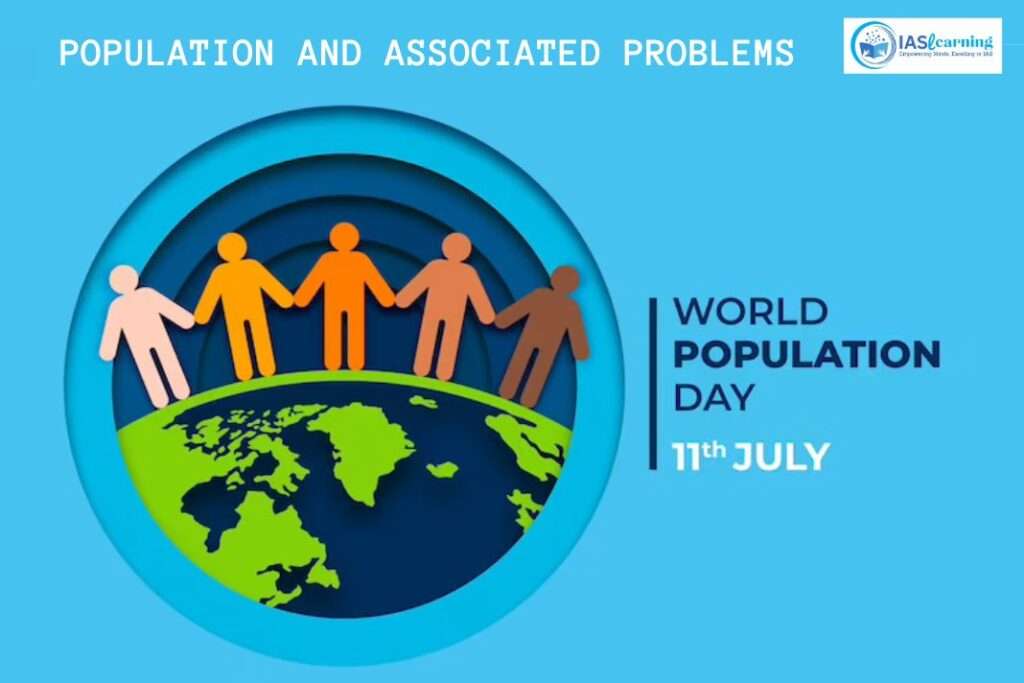
Social Aspects:
- Crime and Unemployment: Overpopulation can lead to a high youth population with limited job prospects, resulting in unemployment. This can contribute to social crimes such as robbery, begging, prostitution, and even more serious criminal activities. Discontent among educated unemployed youth can also manifest in acts of terrorism in certain regions, as seen in Jammu and Kashmir.
- Minority-Majority Gap: In some cultures, overpopulation can give rise to fears of dominance over minority communities and concerns about cultural and identity loss. These fears can fuel communalism and create social divisions based on religion or ethnicity.
Economic Aspects:
- Aging Population: Overpopulation, combined with increased life expectancy, can result in a rapidly aging population. The proportion of the elderly population in India is rising, leading to higher healthcare and social security costs. This places a significant financial burden on the government and may reduce funds available for investments in capital assets.
- Unemployment: While India has a large labor force due to overpopulation, it can be challenging to provide gainful employment to every working-age individual, particularly in urban areas. Disguised unemployment in rural areas and open unemployment in urban areas can create economic disparities and social challenges.
- Resource Depletion: Overpopulation contributes to excessive resource exploitation, environmental degradation, and resource depletion. India’s population has grown geometrically, while resources have increased only arithmetically. This imbalance places stress on natural resources and the environment.
- Uneven Income Distribution: Overpopulation affects the government’s ability to invest in capital formation and economic development. Uneven income distribution can result from disparities in employment opportunities and economic development efforts.
Overpopulation can have notable political implications in a country like India. Here are some of the key political aspects influenced by overpopulation:
- Economic and Social Conditions: Economic and social challenges resulting from overpopulation, such as rising unemployment, poverty, and unequal wealth distribution, can significantly impact a nation’s political landscape. These conditions can lead to social unrest and protests, affecting law and order.
- Caste-Based Politics: In India, political parties often engage in caste-based politics to secure votes from specific caste groups. This practice can contribute to social division and can lead to identity-based voting patterns. Caste-based politics can also affect the formulation of policies and allocation of resources.
- Interstate Disparity in Population Distribution: There are substantial differences in population growth and distribution among states in India. Overpopulated states may experience increased migration to states with smaller populations and more established economies. This can result in social conflicts, including debates over who is considered an “insider” versus an “outsider.” Some states may reserve jobs for their residents, which can affect the movement of people and resources.
- Dependency on Immigration: Aging states with declining populations may become dependent on foreign immigrants to sustain economic growth and address labor shortages. The influx of immigrants can lead to debates over cultural integration, employment opportunities, and resource allocation.
Environmental Aspects:
- Environmental Deterioration: Overpopulation exerts immense pressure on the land and natural resources, resulting in less available land per person. This leads to environmental deterioration, including issues such as pollution, loss of biodiversity, and global warming. Cities like Delhi, suffering from severe air pollution, demonstrate the consequences of overcrowding on air quality and public health.
Health Aspects:
- Spread of Infectious Diseases: Population growth is a key factor influencing public health. Overcrowding in urban areas and environmental changes driven by overpopulation contribute to the spread of infectious diseases. Governments may struggle to expand healthcare facilities and systems adequately to address the healthcare needs of a growing population.
Demographic Disaster:
- Unrealized Demographic Dividend: While a growing population can potentially offer a demographic dividend in terms of economic growth, this benefit is contingent on factors such as inclusive economic growth, job creation, and improved living conditions. If these conditions are not met, there is a risk of the demographic dividend turning into a demographic disaster.
- Challenges in Education: India faces challenges in its education system, with a significant proportion of students struggling with basic literacy and numeracy skills. A lack of quality education can hinder the development of a skilled workforce, impacting economic growth.
- Healthcare System Deficiency: The healthcare system may be underdeveloped and unable to meet the healthcare needs of the population. High rates of child malnutrition and inadequate healthcare access contribute to health challenges.
- Underemployment: The job market may face issues of underemployment, where a substantial portion of the workforce is not engaged in full-time, productive employment. This can lead to social and economic disparities.
- Rise in Social Unrest: The consequences of low employment growth and economic disparities are evident in the rise of social unrest, protests, and, in some cases, even terrorism and law-and-order issues.
Managing population growth effectively is a complex and multifaceted challenge. Here are some strategies and initiatives that can contribute to managing population growth in India:
- Raising the Marriage Age: Increasing the legal marriage age to 21 can have a positive impact on fertility rates by delaying family planning and promoting smaller families.
- Education Dissemination: Education plays a crucial role in influencing perspectives on family planning and birth control. Promoting education, particularly for women, can lead to greater awareness and health-conscious decisions, including family planning.
- Promoting Adoption: Encouraging adoption as an alternative to biological childbirth can help reduce population growth. This option provides childless couples with the opportunity to provide a home for orphaned or abandoned children.
- Economic Measures: Creating employment opportunities, especially in both urban and rural areas, is essential for managing population growth. Government policies should focus on economic development and job creation to address issues of underemployment and unemployment.
India’s Population Policy:
India has a long history of population policies aimed at controlling population growth. These policies have evolved over the years, from early efforts to enhance public health standards to the promotion of various birth control methods.
National Population Policy (NPP), 2000: This policy introduced a comprehensive approach to population control, focusing on integrated service delivery for reproductive and child health care. It set targets related to reducing infant mortality, maternal mortality, improving child and reproductive health, and increasing access to contraceptives.
Government Schemes: The Indian government has introduced various schemes to address population growth:
- Janani Suraksha Yojana: Encourages institutional delivery to reduce maternal and newborn fatalities through financial incentives.
- Integrated Child Development Scheme: Focuses on the health, nutrition, and vaccination of children under six and provides support to expectant and nursing mothers.
- Universal Immunization Program: Aims to immunize children against vaccine-preventable diseases.
- Pradhan Swasthya Mantri Suraksha Yojana: Seeks to bridge disparities in the cost and accessibility of tertiary-level healthcare.
- Program for Accredited Social Health Activists (ASHAs): ASHAs provide contraceptives and family planning information to beneficiaries in their homes.
Managing population growth is a complex challenge that involves not only family planning initiatives but also addressing socio-economic factors, promoting education, and creating employment opportunities. While these policies and initiatives have made progress, there is still a need for targeted strategies in areas experiencing rapid population growth. Balancing the population with available resources and sustainable development remains a crucial goal for India.


